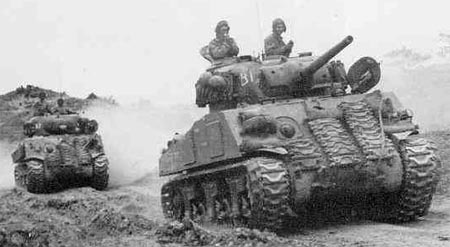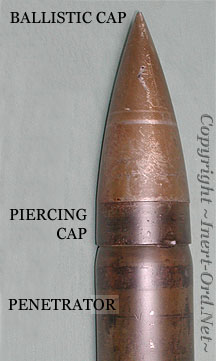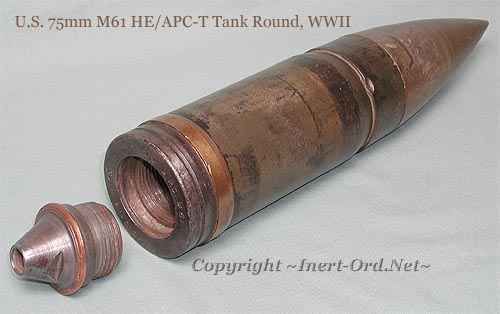
This is the 75mm APC cannon round used in the U.S. M4 Sherman Tank. The Sherman was the main American battle tank during WWII. Classified as a medium tank it weighed 35 tons and was made in a number of variations with different cannon, this being the type which rolled ashore on D-Day. Although capable of penetrating 3.7 inches of armor at 500 yards, its 75mm gun was a poor match for German tanks like the Tiger and Panther which had 4 to 4.8 inches of frontal armor. The Sherman's corresponding 2.8 inches was easily defeated by the Panzer's 75mm and 88mm high velocity cannon. However, the M4 was simple, reliable and agile, traits the larger German tanks lacked.

(Note spare tracks mounted up font as additional frontal armor.)




